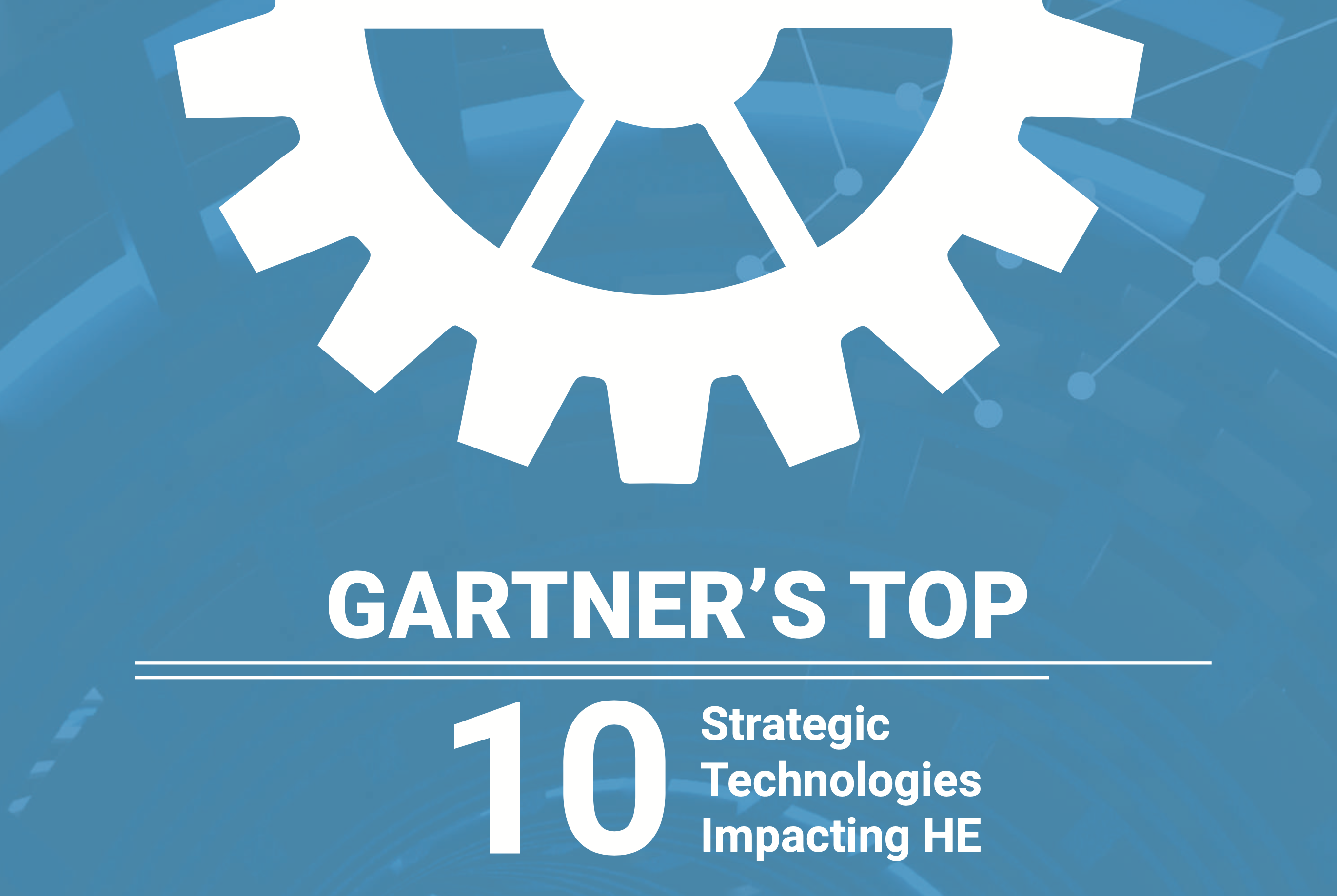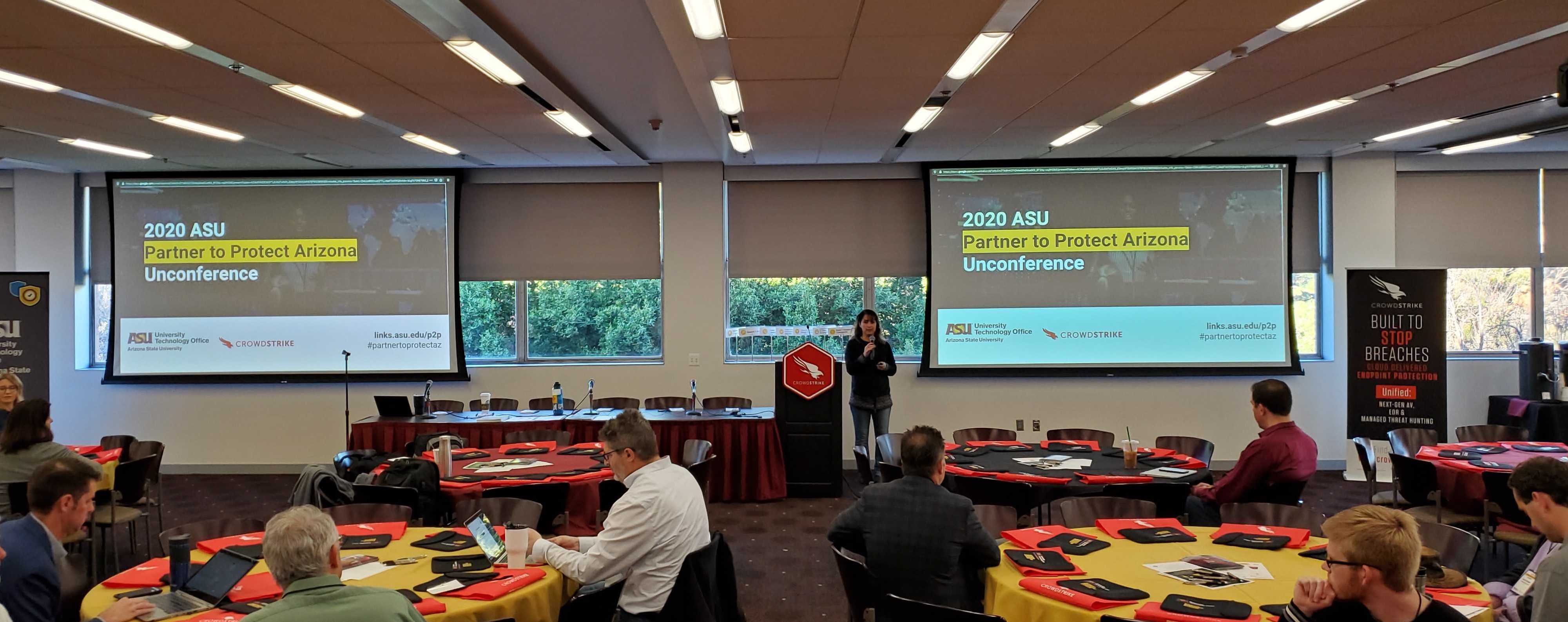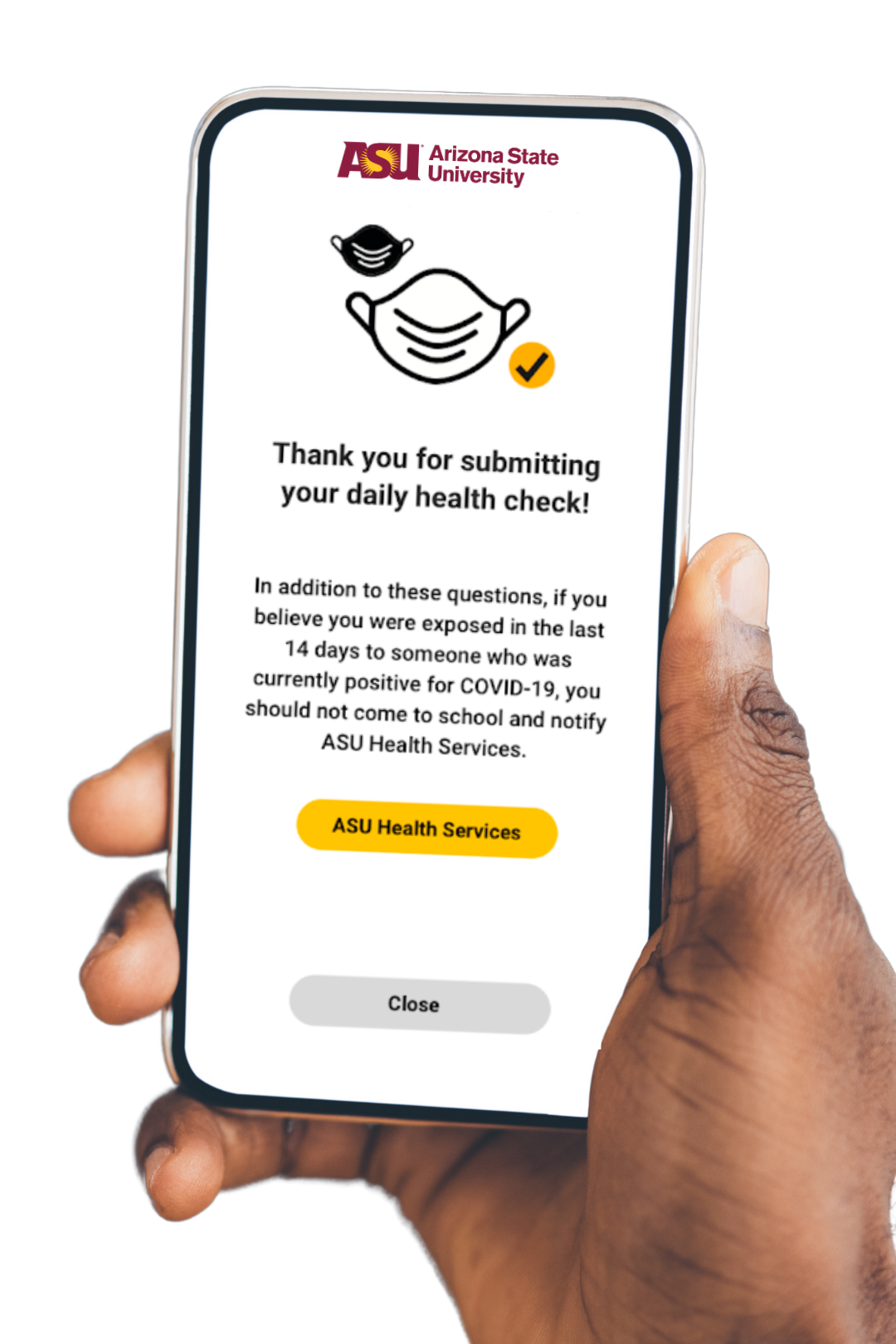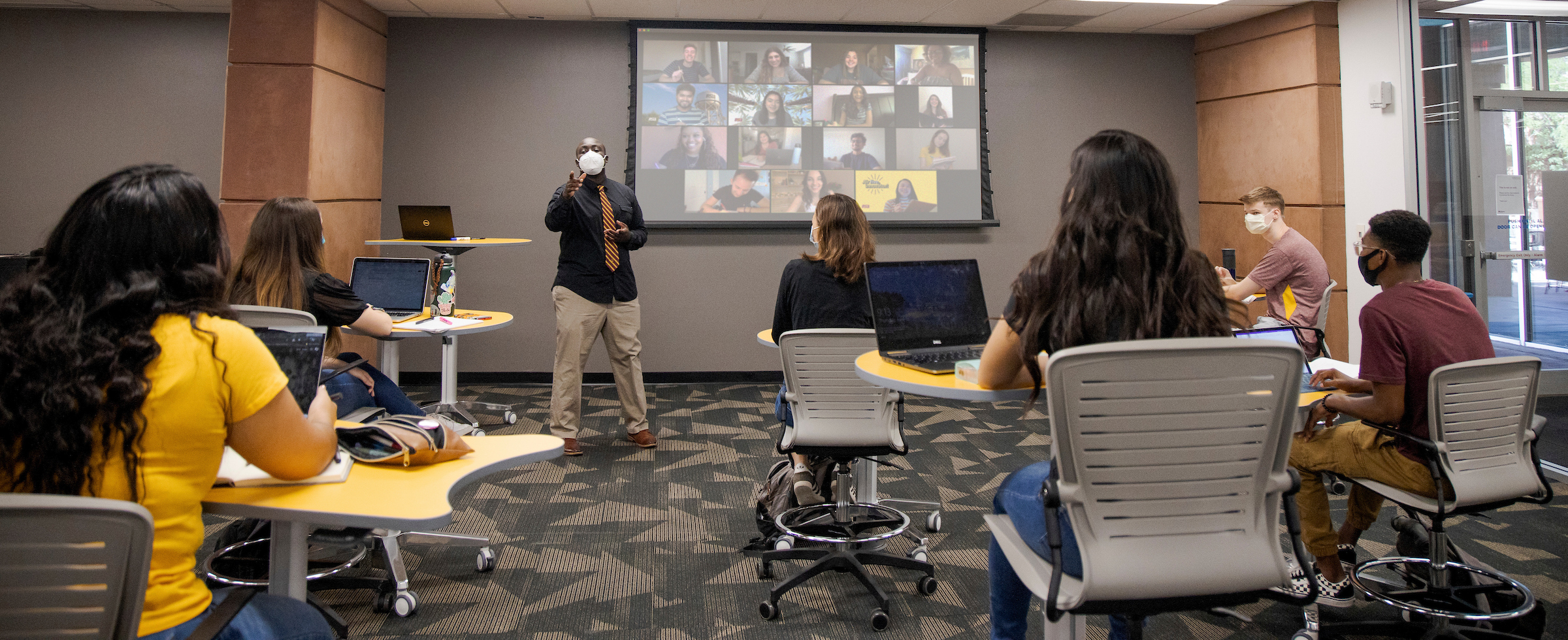ASU’s service, experience for Sun Devil community aligns with future tech trends
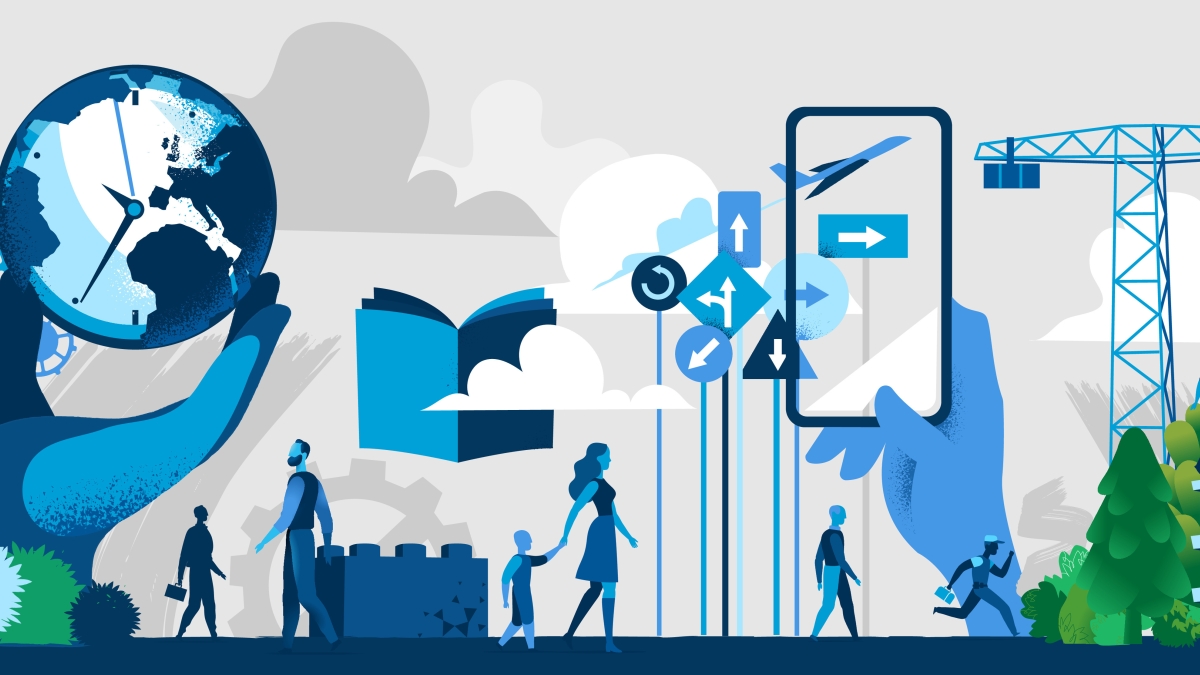
Serving university students, faculty and staff means understanding and anticipating trends of the future.
In order to ensure Arizona State University remains on the forefront of enabling the disruptive potential of technology, the University Technology Office cross-referenced ASU’s diverse portfolio of technology activities, products, programs and services to top research and forecasting firm Gartner’s report on the Top 10 Strategic Technologies Impacting Higher Education in 2020.
From next-gen security and risk management partnerships and processes to systems empowering faculty in their career journeys, to strategic use of nudge technologies across ASU's digital campus services, ASU is leveraging key technologies for the current and future success of its community.
Discover how a variety of ASU technology-enabled initiatives, protocols and strategic partnerships have aligned with Gartner’s 10 top trends of 2020:
1. Artificial intelligence strategy and tactics
Broadly speaking, artificial intelligence (AI) is a process by which programs identify trends or patterns across large data sets, using this information to “make a decision,” whether that is providing accurate information or assessments.
ASU embodied artificial intelligence strategy and tactics with its service of the university’s community. Software like Benji, the financial aid chatbot, or Sunny, the ASU information chatbot, was built to intuitively assess and anticipate the needs of the user. Furthermore, the assessment-predictive program ALEKS was able to quickly and effectively place test-takers into the most fitting mathematics courses.
2. Next-gen security and risk management
A fortress of countless apps, programs and devices mitigated security threats for all of ASU’s users in part of the university’s next-gen security and risk management. Protocols geared towards awareness and understanding of one’s data usage also promoted proactive protection of important information.
In addition to protecting the university, ASU convened a community of cybersecurity professionals, practitioners, partners and champions at the 2020 ASU Partner to Protect Arizona Unconference, in partnership with Crowdstrike, to surface emergent trends and challenges — and strategize accordingly.
ASU’s Partner to Protect Unconference tackled seven key themes. Photo by UTO
3. Smart campus
ASU advanced a variety of smart technology initiatives from campus to community. From advanced networks powering smart parking and internet-enabled buses to “blue light” smart safety poles, smart campus efforts enhance the safety and well-being of ASU's students.
The Amazon Web Services Smart City Cloud Innovation Center (CIC) and Cox Connected Environments Collaboratory are important representatives of the partnerships ASU has built to create a smart campus that, in turn, works with community partners to foster smart city projects. In 2020, the CIC partnered with cities across Arizona to tackle a variety of challenges — from senior fall prevention to reducing poverty, graffiti removal and so much more — using Amazon’s innovation processes, cloud expertise and global solution platforms.
4. Nudge tech
“Nudge tech” brings a more personalized touch to digital interactions, which was all the more necessary in a time of remote learning, teaching and working. Technologies like the ASU Mobile App, Slack and more kept students, instructors and staff members connected and collaborating both asynchronously and in real time.
This trend also resulted in heightened digital security through two-factor authentication.
5. Digital credentialing technologies
ASU is considered a pioneer of digital credentialing technologies, changing the way experience and accomplishments are measured in the higher education and professional worlds. The Learning Futures Collaboratory’s efforts in this field are expanding opportunities for lifelong learners, and this year’s Digital Credential Summit brought the university’s changemakers together to advance those efforts even further.
6. Cross-life-cycle CRM
ASU’s commitment to customer service is epitomized by its technical investment in cross-life-cycle CRM (customer relationship management). Standardization of tools like Salesforce allow for a cohesive experience for everyone the university touches.
7. 5G/ecosystem infrastructure
The Cox Connected Environments Collaboratory is working with ASU to build the smart campus of the future, while also investing heavily in 5G infrastructure, expanding the capabilities of wireless devices beyond the bounds of what is currently possible. Partnerships with T-Mobile, Verizon and others are accelerating the progress to a 5G future.
ASU’s Dreamscape Learn initiative will transport biology students to the Alien Zoo to study new life forms using a new multisensory, virtual reality environment that is equipped with 5G enabled wireless haptic backpacks to provide sensory input.
8. New display, visualization and collaboration technologies
New display, visualization and collaboration technologies became even more necessary in the world of COVID-19, pushing results forward that were the product of years of ASU innovation. Notable innovations include: ASU Sync, the university’s new learning hybrid modality, which allowed students to interact safely in-person and remotely simultaneously; the Daily Health Check supported Sync in the background by tracking the health of the community both on and off campus; and XR@ASU offered new ways to for students to consume and create learning experiences using emerging technologies like VR and AR.
ASU Sync connects students on-campus and remote for live, synchronous instruction. Photo: ASU
9. Career software
At its core, ASU’s mission is to educate its learners and prepare them for their future work, and so the university has put a premium on career software. This includes the professional development program Career EDGE, the virtual career exploration experience offered by Career Arcade’s virtual reality application and a partnership with the job search site Handshake, all working together to set students up for success in the future of work.
10. Faculty information systems
Support of our faculty is support of our students, so it is important that faculty information systems are able to let them effectively do their jobs. ASU Vita; the Review, Promotion, Tenure system; and Faculty Activity Reports work in the background to enable lifelong learning.
Looking toward 2021 and beyond
Named the most innovative campus in the nation six years in a row, ASU continues to redefine the landscape of higher education. By understanding and aligning its work with the trends of the future, the university can continue to adapt to best meet the needs of its community in an ever-changing world.
The various initiatives, protocols and strategic partnerships mentioned above represent only a part of UTO’s extensive portfolio of work. For more, check out this top 10 trends infographic.
Many thanks to all team members across the university for their hard work and continued commitment to supporting the entire Sun Devil community. And a special thanks to Tristan Ettleman (co-author), Sophie Jones (co-author), Klariz Gapusan (designer), Laura Geringer (designer) and Samantha Becker for their support on this article.
More Science and technology

ASU researcher part of team discovering ways to fight drug-resistant bacteria
A new study published in the Science Advances journal featuring Arizona State University researchers has found vulnerabilities in certain strains of bacteria that are antibiotic resistant, just…

ASU student researchers get early, hands-on experience in engineering research
Using computer science to aid endangered species reintroduction, enhance software engineering education and improve semiconductor material performance are just some of the ways Arizona State…

ASU professor honored with prestigious award for being a cybersecurity trailblazer
At first, he thought it was a drill.On Sept. 11, 2001, Gail-Joon Ahn sat in a conference room in Fort Meade, Maryland. The cybersecurity researcher was part of a group that had been invited…
